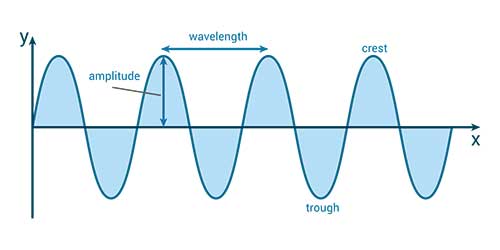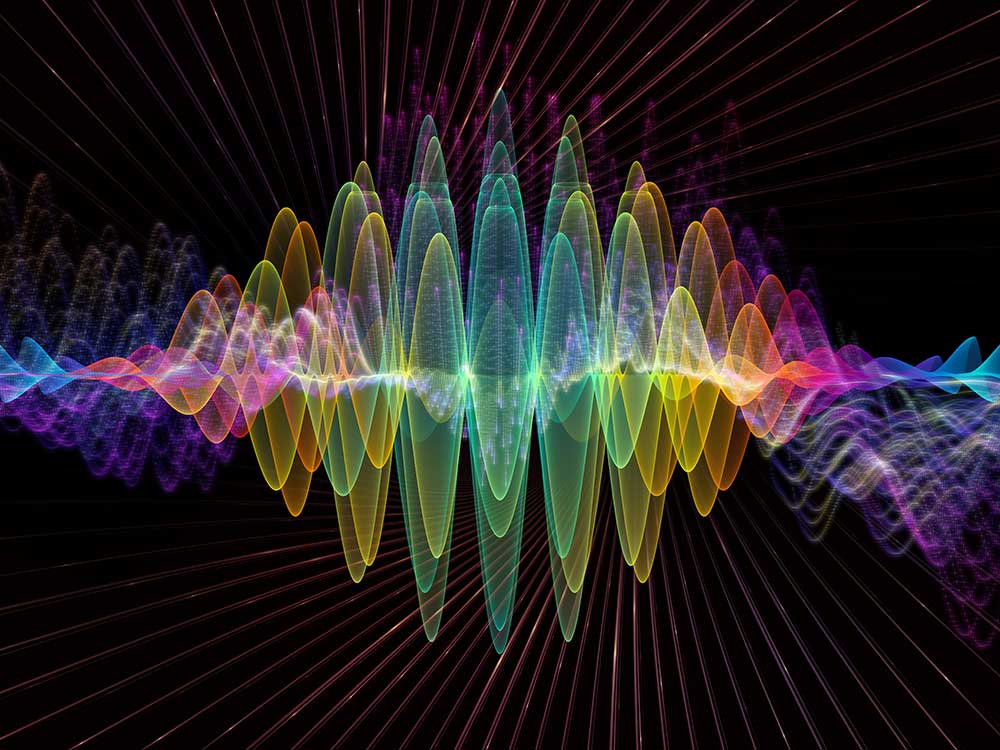Before diving into the intricacies of bioresonance therapy, let’s simplify the concept for better understanding. “Bioresonance” combines two terms – “bio,” which refers to biological, and “resonance,” which signifies frequencies or vibrations.
Everything in life resonates or vibrates.
How do we perceive the color blue as “blue” or red as “red”? This occurs because the wavelength of the color blue falls between approximately 450 and 495 nanometers, which represents the distance between two consecutive waves. In contrast, the wavelength of red is around 700 nanometers, making it longer than blue.
These specific colors are the ones reflected, while the others are absorbed. Our eyes detect the reflected wavelengths, which are then processed by our brain and interpreted as the colors we perceive.

Combining biology and resonance
When we combine the concepts of biology (human body) and resonance, we can explore how the human body’s various structures and systems can respond to external vibrations that match their natural frequencies on our health and well-being.
Cells and organs:
Each cell and organ in the human body has a unique natural frequency at which it vibrates. These frequencies help maintain the proper functioning of our biological systems. When external factors such as stress, toxins, or diseases disrupt these frequencies, it may lead to dysfunction or illness.
Sound therapy:
Certain frequencies or sounds can have a positive impact on the human body, promoting relaxation and healing. Sound therapy, which often includes the use of instruments like tuning forks, singing bowls, or gongs, aims to create resonance within the body, aligning its frequencies and helping it return to a balanced state.
Resonance in medical imaging:
In magnetic resonance imaging (MRI), the principle of resonance is used to create detailed images of the human body’s internal structures. MRI machines generate a strong magnetic field that aligns the hydrogen atoms in the body’s water molecules. When a radiofrequency pulse is applied, the atoms absorb energy and resonate at specific frequencies. As they return to their original state, they emit frequencies that are detected and used to create images.
I don’t resonate well with person
In the context of interpersonal relationships, the term “resonate” is often used metaphorically to describe how we connect with others on an emotional, mental, or even spiritual level.
When you meet a new person and instantly feel a liking for them, it might be said that your personalities or energies “resonate” with each other. On the other hand, if you feel an aversion or discomfort around someone, it might be because your vibrations do not resonate or are incompatible.

Bioresonance and well-being
When it comes to bioresonance, the term “resonate” takes on a more literal meaning. Bioresonance therapy is based on the idea that every cell and organ in the human body vibrates at a specific frequency. These frequencies contribute to the overall health and well-being of an individual.
When a person is exposed to external factors such as stress, toxins, or diseases, the natural frequencies of their cells and organs can become disrupted, leading to dysfunction or illness.
In bioresonance therapy, the goal is to restore the body’s natural frequencies by using resonance that detects the disrupted frequencies and generates corresponding healthy frequencies. These healthy frequencies are then introduced back into the body, helping it to “resonate” at the proper frequencies and promoting healing and balance.
In both cases, the term “resonate” is used to describe a harmonious connection or alignment, whether it is between two people or within the various frequencies of the human body. While the context is different, the underlying idea of harmony and balance remains consistent.
